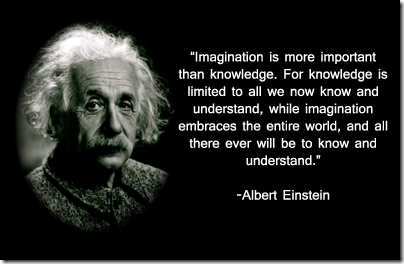
I admit it—I don’t like Successories, the pretty pictures with inspiring sayings that don the walls of corporate America. In fact, my first purchase to decorate my team’s new space was the poster-sized Demotivator Calendar from despair.com. I (and virtually every good developer I’ve ever met) love these spoofs on the ever-present corporate décor.
You might think I enjoy mocking Successories because I believe the words they portray like Values, Vision, and Mission are meaningless corporate-speak meant to manipulate shallow-thinking cubical jockeys. If that is what you conclude from a “demotivator” on my wall, you would be dead-wrong. 
I despise Successories for just the opposite reason. I believe the concepts these pretty posters are meant to inspire employees with are vitally important–way too important to trivialize with a one-size-fits-all platitude and poster.
Over the years, I’ve seen so many leaders (in both the social and commercial sectors) that struggle with communicating concepts like values, vision, mission, and strategy. So, it’s no wonder that so many people have completely written off the words themselves. They now associate a word like vision with the vapid trivialization that is the meaningless poster. This is tragic.
What to Do About It
I have found that the confusion starts when we fail to define our terms. How does mission differ from vision, and is either really any different from strategy? What do we mean by values? If we cannot define the terms, we cannot think clearly about them, and we certainly cannot communicate them to our teams. We’re left simply resorting to something like “We are a company with an obligation to shareholders to make money. Bottom line: we need to make money.” While this is completely true, our people hear this as “We do anything for money.” We have some unpleasant names for people with this mission statement. No one wants to sign up for that. We must do better.
Defining Terms
Let’s start with some definitions…
Values articulate the core things we care about. Our values inspire our vision.
Vision is our picture of how the world could and should be. Our vision defines the end we strive for.
Mission is what we do every day. Mission is executable and it doesn’t change lightly.
Strategy lays out a plan for executing on our mission.
Goals are surfaced by our strategy.
Objectives are framed by our goals.
Tactics are driven by our objectives and determine how we spend our time and energy.
I see these concepts as layers of foundation, each one flowing from and building off of the lower layers. The lower layers are more abstract, simple, and unchanging. The upper layers are more concrete, detailed, and subject to changing circumstances.

Values
I believe much of our values are universal. We all have a drive to leave our mark on the world, to give more than we take, and to be competent. Software people add to this a strong desire to create. We find it deeply satisfying to solve real problems with elegant models formed in our imaginations and elegantly crafted in code. I am sure it is the same rush a painter gets as he translates the scene in his mind onto canvas to the delight of his audience. He comes to love the smell of paint the same way we come to love the sight of clean code.
Vision
Vision is seeing what isn’t, but could be. Vision isn’t about what we do, it’s about how we want things to to be. Vision creates an anticipation of a better future. That anticipation motivates. It overcomes the apprehension that comes with change and drives us out of our comfort zone.

Having, believing, and communicating a compelling vision for my team is the most important thing I do as a leader. Everything else flows from it.
Lewis Carrol’s famous “If you don’t know where you are going, any road will get you there.” has become cliché, but only because it expresses “common sense” that we often miss.
My team creates solutions for service businesses with field workers, like HVAC install and repair, plumbing, pest control, cleaning services, and others. The work these companies do is critical to the quality of life we all enjoy. We believe the tools these people currently have to run these businesses could be so much better. We burn untold gallons of fossil fuels routing drivers inefficiently. So many hours are wasted annually because, not only are we scheduling, but the entire process is unpredictable.
Our vision is of a transformed service industry—quicker response times, tighter scheduling windows, more customers served, and less fuel consumed. In order for us to accomplish this, our solutions must be highly scalable and allow for high levels of developer productivity.
Mission
If values and vision answer the why question, mission answers the what question. My team’s mission is to deliver software solutions that bring about the transformation of field service business we envision. We can only accomplish this mission if we have simple yet scalable architectures and clean code.
Strategy
If vision answers why and mission answers what, then strategy answers how. My team is executing on its mission through several high-level strategies.
- We use iterative development cycles and the other agile techniques to ensure that we are always working on the highest value features for our market.
- We are building a distributed system of event-driven services that each follow the Single Responsibility Principle so we can scale the application as well as the development team(s).
- We are always striving to improve our skill in writing clean code.
- We follow test-driven development to keep our designs clean and our code reliable.
Goals, objectives, and tactics each successively further flesh out the details of how we plan to make our vision a reality. Maybe more on those in another article.
Conclusion

Putting Successories on the wall is a substitute for vision like a Lunchables is a substitute for a fine steak dinner.

 The 70’s and 80’s had The Mythical Man-Month. The 90’s had Peopleware. These works helped software managers understand and communicate to non-software people the dynamics involved in effectively managing software teams. The management models that got cars and TVs built at ever cheaper costs didn’t work on software projects. Brooks, Lister, and DeMarco helped thoughtful software managers figure out how to best manage professionals who must bring a challenging combination of creativity and technical rigor to their work.
The 70’s and 80’s had The Mythical Man-Month. The 90’s had Peopleware. These works helped software managers understand and communicate to non-software people the dynamics involved in effectively managing software teams. The management models that got cars and TVs built at ever cheaper costs didn’t work on software projects. Brooks, Lister, and DeMarco helped thoughtful software managers figure out how to best manage professionals who must bring a challenging combination of creativity and technical rigor to their work. 






